 Most of today’s new therapy launches are global, but the strategy behind those launches has changed significantly, due to the advent of more specialty drugs targeting smaller populations, and the impact of the shift in decision making from physician to payer. The industry can no longer rely on physician promotion only for a successful global launch.
Most of today’s new therapy launches are global, but the strategy behind those launches has changed significantly, due to the advent of more specialty drugs targeting smaller populations, and the impact of the shift in decision making from physician to payer. The industry can no longer rely on physician promotion only for a successful global launch.
As the life-sciences industry continues to expand into new markets globally, companies are challenged with balancing the need for coordinated global strategies and local flexibility. Because each geography has its own linguistic, cultural, and market profile necessitating an individualized approach, having the business flexibility and agility to respond quickly to change is crucial.
According to IMS Health, in the last decade, the pharmaceutical industry has seen extremely rapid changes in the environment for new launches. Understanding how the environment has changed and what this means for today’s launches is a vital launch preparation activity.
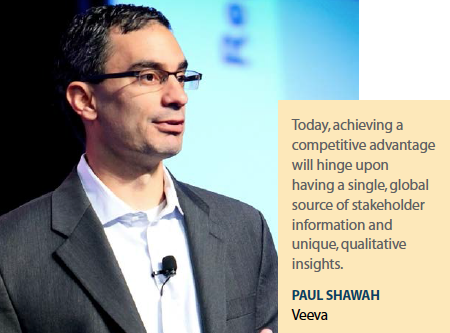 “However, some companies are still stuck on inflexible, aging legacy systems to support areas most crucial to a successful launch, including customer relationship and content management," says Paul Shawah, VP of product marketing, Veeva. “Content and customer information is disconnected, trapped in separate systems, making it difficult for commercial teams to tailor messaging to customers’ preferences and interests."
“However, some companies are still stuck on inflexible, aging legacy systems to support areas most crucial to a successful launch, including customer relationship and content management," says Paul Shawah, VP of product marketing, Veeva. “Content and customer information is disconnected, trapped in separate systems, making it difficult for commercial teams to tailor messaging to customers’ preferences and interests."
The fragmented landscape of medical and promotional content also increases cost and complexity while limiting visibility. Although brand success is rooted in science and data, communicating evidence to many varied stakeholders grows increasingly complex in a global market.
“Information silos, for instance, make it difficult for teams worldwide to access the latest claims, content, and messaging," Mr. Shawah says. “This means that each region often creates entirely new assets rather than adapting core materials, thus increasing cost, complexity, and the risk of propagating inconsistent claims."
Striking the balance between developing a clear, consistent story while enabling regions to adapt materials based on local needs remains a challenge.
With the level of variability in different markets, ranging from language to treatment and cultural paradigms, marketers must ensure messaging is locally relevant while still aligning with global themes and data.
“Another key component to delivering globally harmonized campaigns is leveraging a single source of truth for commercial content across the digital supply chain," Mr. Shawah says. “This helps ensure that all geographies are using the latest, approved claims and minimizes the risk of outdated information.
Starting with a base of core assets that can be modified for local conditions helps ensure consistency, while freeing marketers from the time and cost of creating new content for each use."
Organizations now have the technology to be able to sync core claims that are driven by the scientific platform related to a brand. Regional marketers can then leverage the core claims associated with the brand and deliver those to their geographies that make sense based on market, regulatory, and cultural requirements, as well as local patient demographics.
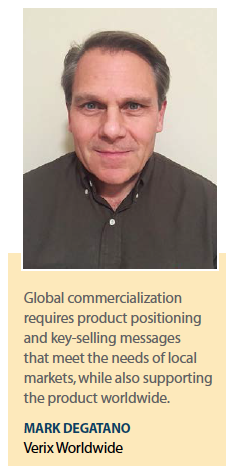 According to Mark Degatano, consultant and an advisory board member at Verix, the differences in healthcare systems, patient populations, and underlying treatment paradigms can be significant challenges across countries; however, in some ways, the world has become smaller with the sharing of information, the availability of healthcare-related technologies and websites, and the widespread and rapid diffusion of medical and scientific discoveries.
According to Mark Degatano, consultant and an advisory board member at Verix, the differences in healthcare systems, patient populations, and underlying treatment paradigms can be significant challenges across countries; however, in some ways, the world has become smaller with the sharing of information, the availability of healthcare-related technologies and websites, and the widespread and rapid diffusion of medical and scientific discoveries.
“Global commercialization today requires a greater skill in developing the product positioning and key-selling messages that meet the needs of local markets while also supporting the product worldwide," he says. “Marketers must deeply understand the features of their products, ensure that they have fully captured the needs and perceptions of relevant audiences across countries, and then craft the benefit statements that best align product features to their customers."
Using technology and digital channels to drive physician behavior worldwide, marketers are leveraging databases that capture the influence networks among and across physicians. Marketers can identify physician influencers at local levels, in contrast to the KOLs who are international or national influencers, and activate their sales and marketing efforts to deliver messages via these physician connections at the territory or district level.
Getting input from stakeholders in the various localities early in the game is extremely helpful for streamlining the launch process, says Erin Byrne, chief engagement officer, GHG.
“When doing a global launch, one of the things we find to be helpful is getting involvement and alignment from colleagues in other regions early on because we can then pull those opinions into the global brand platform. This can potentially minimize customization and reworking down the line."
Creating this type of coordinated launch requires collaboration between all customer-facing teams, including medical affairs, sales and marketing, and market access, which will result in more orchestrated customer experiences, Mr. Shawah says. “Traditional methods of sourcing stakeholder data — in which each team acquires demographic lists of active KOLs in each territory — will no longer suffice," he says. “Today, achieving competitive advantage will hinge upon having a single, global source of stakeholder information and unique, qualitative insights."
For instance, understanding stakeholders’ clinical interests, sentiments, and attitudes toward particular therapies can make the difference between delivering a valuable customer interaction and missing the mark with generalized outreach.
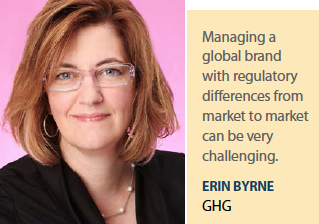 “The challenge becomes if there are messages that are different market to market, it’s important to make sure that there’s a very logical reason for this strategy," Ms. Byrne adds. “The Internet levels the playing field, so to speak. At the same time it’s important to not create confusion or conflicts in the messaging."
“The challenge becomes if there are messages that are different market to market, it’s important to make sure that there’s a very logical reason for this strategy," Ms. Byrne adds. “The Internet levels the playing field, so to speak. At the same time it’s important to not create confusion or conflicts in the messaging."
The Shift From Physician to Payer Power
One of the biggest changes today in both global and local markets is the shift away from physicians as primary decision makers. The increasing power of payers over prescribing decisions is dramatically influencing global launch strategy, reports IMS Health.
The research company has been studying launch trends that go back 16 years, and over that time has documented the trend of the decreasing impact of audited prescriber-focused promotion.
IMS reports have showed that physicians have increasingly less control over what gets prescribed, as payers impose restrictions and patients become more involved in paying for their healthcare.
According to IMS, in its very first Launch Excellence study six years ago, all eight countries — U.S., U.K., Spain, Japan, Italy, Germany, France, and Canada — studied showed a measurable relationship between cumulative share of voice in promotion to prescribers and therapeutic market share achieved in a given country at a specific point post launch.
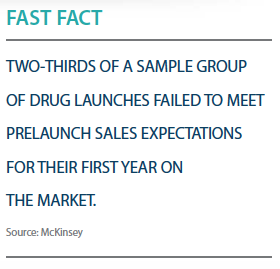 Now, there are at least three countries where that correlation doesn’t exist, and for the countries where the relationship continues to exist, it is much weaker than it previously was. The United Kingdom is the most extreme example, with a complete breakdown between the cumulative share of promotional spend a launch achieves in its early quarters in its therapeutic market and the market share it achieves in its therapeutic market. According to IMS, the driver behind this is simple: prescriber-focused promotion can only be a clear driver of market share if prescribers are primary decision makers on whether launch products get used.
Now, there are at least three countries where that correlation doesn’t exist, and for the countries where the relationship continues to exist, it is much weaker than it previously was. The United Kingdom is the most extreme example, with a complete breakdown between the cumulative share of promotional spend a launch achieves in its early quarters in its therapeutic market and the market share it achieves in its therapeutic market. According to IMS, the driver behind this is simple: prescriber-focused promotion can only be a clear driver of market share if prescribers are primary decision makers on whether launch products get used.
High-profile launches, well-supported by major pharmaceutical companies, such as Exubera and Caduet from Pfizer, and Rasilez/Tekturna from Novartis, failed to achieve their originally predicted potential as a result of this shift, IMS reports.
“Global launch plans have undergone a shift with the evolution of healthcare," Mr. Shawah says. “Years ago, companies would disseminate a uniform set of key messages, primarily directed at prescribing physicians. There were no insights into customer behavior derived from their individual use of personal and nonpersonal channels. Similarly, information sharing between commercial and medical teams was virtually nonexistent."
However, certain prescribers still remain influential and in certain therapy areas they retain more influence. In fact, the strong shift of launch activity into the specialist — and often extremely specialist, even orphan — sector can be a countervailing factor. In addition, new stakeholders have appeared in the form of patients, who have rising interest in, and influence on, new treatment uptake, and payers themselves have changed, with power fragmenting to local players in some countries, or re-consolidating at a national level in some countries with extreme financial stress, IMS reports.
There are many challenges shaping global launch success today, including cultural differences, Ms. Byrne says.
“Certainly, the payer environment in different countries is a challenge, the approval process in different countries is a challenge, but sometimes there are even situations where personal preferences in different countries may dictate product success or failure," she says. “For example, in the contraception category, some products may not do as well in one country as in others even though they offer greater efficacy because there may be a personal preference by women who may not want to use a certain type of product."
The Shift from Blockbuster to Specialty Therapies
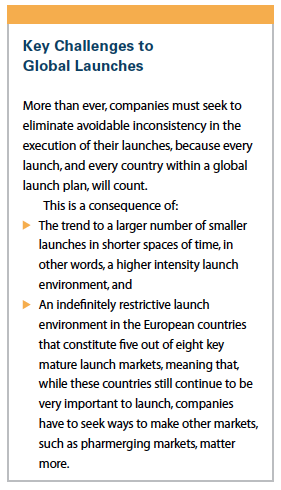 As more and more primary care therapies are offered in generic form, the number of launches in these therapy areas has reduced. Global value growth for protected products has moved decisively toward specialist products, reports IMS.
As more and more primary care therapies are offered in generic form, the number of launches in these therapy areas has reduced. Global value growth for protected products has moved decisively toward specialist products, reports IMS.
“As small molecule products jump off the patent cliff, companies are rapidly shifting their focus toward specialty and biologic products," Mr. Degatano says. “Specialty product launches have been the most successful launches in recent years."
These launches have mostly been conducted by smaller to mid-sized companies, because they can act more quickly, be more innovative in their commercial model, and be more focused on targeted populations, such as orphan drugs and biomarker defined populations.
“And, it’s no surprise, highly specialized therapies don’t need massive scale clinical developments nor the huge marketing and sales efforts put into primary care products," Mr. Degatano says.
This trend will continue to accelerate in the coming years as more small molecule therapies lose patent protection, which will lead to new industry products becoming almost entirely specialist and biologic, and the focus of launch activity becomes increasingly specialist-focused on areas such as oncology, autoimmune diseases, multiple sclerosis, and others, IMS reports.
“The growth of specialized treatments requires a huge mind shift within the life sciences and a major evolution of its approach to commercialization," Mr. Shawah says. “More complex diseases increase pressure on life-sciences companies to provide medical and healthcare stakeholders with the specialized scientific information they need, ultimately leading to better patient outcomes."
Additionally, companies are faced with the challenge of creating more valuable interactions with multiple external expert resources, through a variety of channels, at each stage of a drug’s life.
In this new world, it’s critical to navigate the stakeholder environment effectively.
“Companies need to understand complex networks of influence, including relationships between individual stakeholders, and those individuals’ connections to institutions such as integrated delivery networks and accountable care organizations," he says. “This detailed view will enable life-sciences companies to allocate resources to their best effect."
Patient advocacy groups, for example, are quickly becoming a core component of launch success, exerting significant influence on how a product is accepted in the marketplace. While it may be impossible to reach out to every key member of these groups, companies with deep, finely attuned insights into a specialized space will be able to identify the local experts and community leaders who drive acceptance and decision making.
“The real opportunity in specialty diseases centers around technology, which allows the creation of personal experiences for relevant patients," Ms. Byrne says.
Social media allows the patient to find information on the company and the therapy, which provides a chance to create unbranded experiences that serve as disease education.
“The goal is for the patient to request the medication from his or her physician and for the physician to prescribe it," Ms. Byrne says. “These are certainly very meaningful opportunities."
It’s easy to scale launches to rare disease populations because it’s easy to find the patients.
“Patients are connecting with the company, other patients, and even the KOLs," Ms. Byrne says. “We have witnessed in the rare diseases space that in some cases, the KOLs even know the patients by name."
In the specialty market, commercialization efforts can be more focused on relatively smaller target physician audiences. The messaging has to be more disease-focused and backed with key publications.
“For example, Vertex launched Incivek with fewer than 100 sales representatives," Mr. Degatano says. “This was the first commercial launch by Vertex and it was a huge success."
Another advantage of niche markets is that these diseases are underserved by current therapies and therefore the market — physicians and patients — is open and receptive to new products. Furthermore, patients tend to be deeply engaged in these life-threatening diseases and seek information and act, such as talk to their physician, quickly, Mr. Degatano adds. (PV)
Editor’s Note: For more information on the rare disease market, please see the related article in this issue.


















